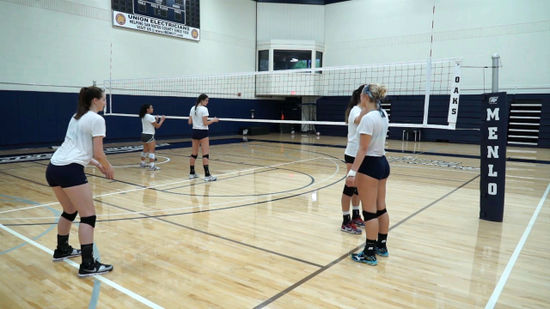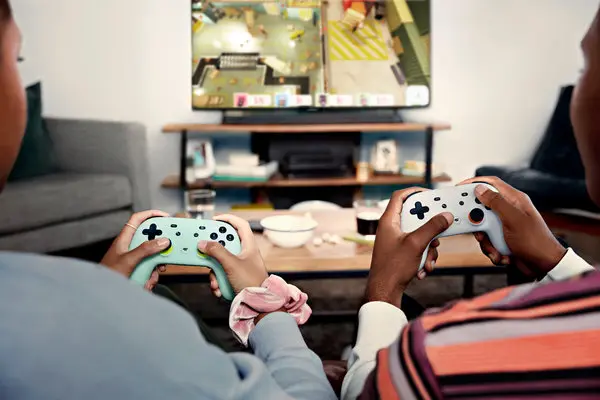
Volleyball is a sport that’s as strategic as it is physical.
It requires athleticism and a deep understanding of each player’s role on the court.
In this guide, I will focus on how positions work within the game by comprehensively covering each one and explaining with the help of examples.
Each position plays a crucial role in the team’s overall strategy, and understanding these roles is key to appreciating the game’s depth.
There are six set spots on the court, and players rotate through these positions, serving when they reach the designated position.
This rotation is fundamental to the game’s strategy, ensuring all players contribute to offense and defense.
Responsibilities of each Position
Below, I am discussing the responsibilities of each position so that you get an idea of how each role works.
Setter
The setter is the team’s strategist, who decides which type of attack the team will use on their next play.
Think of the setter as the quarterback in football or the point guard in basketball.
Their main job is to deliver perfect sets to their teammates, making it easier for them to score.
The setter must have a keen awareness, be able to read the game, and make split-second decisions.
They need to know each hitter’s strengths and weaknesses, delivering the ball to the right person at the right time.
The setter is also vital in defense, ready to dig or block when needed.
To be a great Setter, think of yourself as the team’s conductor, guiding the orchestra to beautiful music.
Set the ball to the same spot repeatedly.
This consistency helps your hitters trust where the ball will be.
Learn to read the other team’s formation and anticipate their moves so you can set up your teammates for success.
Opposite Hitter
The opposite hitter, often positioned on the right side of the court, serves as a counterbalance to the outside hitter.
This player needs to be versatile, contributing both offensively and defensively.
Offensively, the opposite hitter is responsible for dealing with the opponent’s serve and making powerful attacks, especially when the ball is set high and near the antenna.
Defensively, they’re expected to block the opponent’s outside hitters and assist in the back-row defense, making them an all-around key player on the court.
Remember that powerful hits come from a strong and fast arm swing.
Practice hitting against a wall or with a teammate to refine your technique.
Work on your timing and jumping ability to become a more effective blocker against your opponent’s outside hitters.
Even though you’re an attacker, being able to dig and defend is crucial. Practice defensive drills to enhance your back-row skills.
Outside Hitter
The outside hitter, usually found on the left side of the court, is often the team’s primary attacker.
They’re tasked with making various shots, from powerful spikes to strategic tips over the net.
Outside hitters must be able to perform under pressure, as they often receive the most sets, especially in critical moments.
They also play a crucial role in defense, blocking against the opponent’s hitters and covering a significant portion of the backcourt on defense.
Make sure to practice hitting crosscourt, down the line, and off-speed shots to become unpredictable.
Being a reliable passer allows you to contribute even when you’re not hitting.
Work on your vertical leap.
Plyometrics and strength training can help you get more height on your jumps.
Libero
The libero is the defensive cornerstone of the team.
They are dressed differently from their teammates for easy identification.
The libero specializes in defensive skills: digging, passing, and making sure the ball doesn’t touch the floor on their side of the court.
They cannot attack the ball above net height and do not rotate to the front row, allowing them to focus entirely on defense.
The libero also often directs the team’s defensive formation, ensuring everyone is in the right position to counter the opponent’s attacks.
As the defensive leader, your ability to communicate and direct your teammates is crucial.
Practice clear and concise communication.
A libero controlling the opponent’s serve sets up the team for a successful attack.
Quick reflexes are essential.
Practice reaction drills and work on anticipating the hitter’s moves.
Defensive Specialist
Similar to the libero, the defensive specialist focuses on preventing the ball from hitting the court on their side.
However, unlike the libero, they can serve and do not have restrictions on rotation.
The defensive specialist must be quick, agile, and have excellent ball-handling skills.
They’re often brought in to serve or strengthen the backcourt defense, especially when a front-row player might struggle with receiving serves or defending against powerful spikes.
The more you practice, the better you’ll keep the ball in play.
A defensive specialist often comes in to serve, so having a strong serve can make you a valuable asset.
Work on your stance and agility to move quickly and cover more court.
Middle Blocker
The middle blocker is the team’s primary defensive player against the opponent’s attacks.
Positioned at the net, they’re responsible for blocking spikes from the opposing team, covering the area of the net directly in front of them and assisting in blocking at the sides.
Middle blockers need to be tall, have excellent timing, and be able to jump high to block or redirect the ball effectively.
Offensively, they’re also a threat, often used for quick attacks in the middle of the court, making them essential in both defense and offense.
Timing and hand positioning are everything.
Practice with a teammate or against a wall to perfect your block.
Quick sets require fast reactions.
Work on your speed and coordination with your setter.
Efficient movement across the net can make you a more effective blocker and attacker.
Conclusion
Understanding the responsibilities of each volleyball position is key to appreciating the game’s complexity and strategy.
Each role is crucial to the team’s success, from the tactical ability of the setter to the defensive skills of the libero and the attacking force of the outside hitter.
Volleyball is a sport that celebrates diversity in skills and strategies, making it a thrilling game to play and watch.
Whether you’re a player looking to refine your role on the court or a fan eager to understand the game better, recognizing the responsibilities of each position is a great place to start.
Stay in touch to get more updates & alerts on VyvyManga! Thank you


